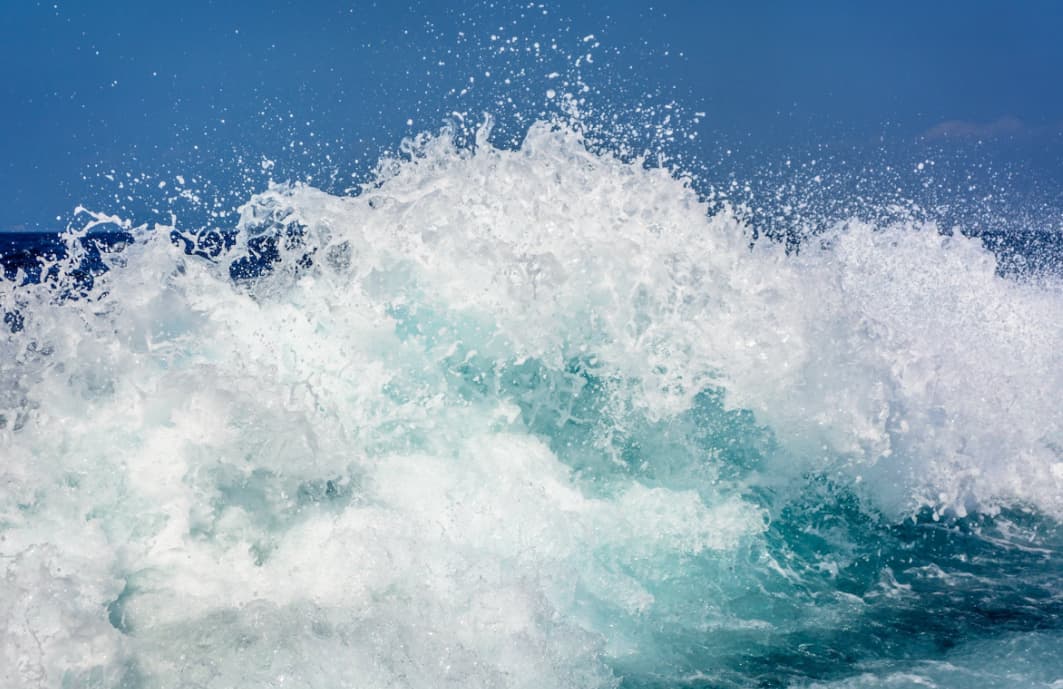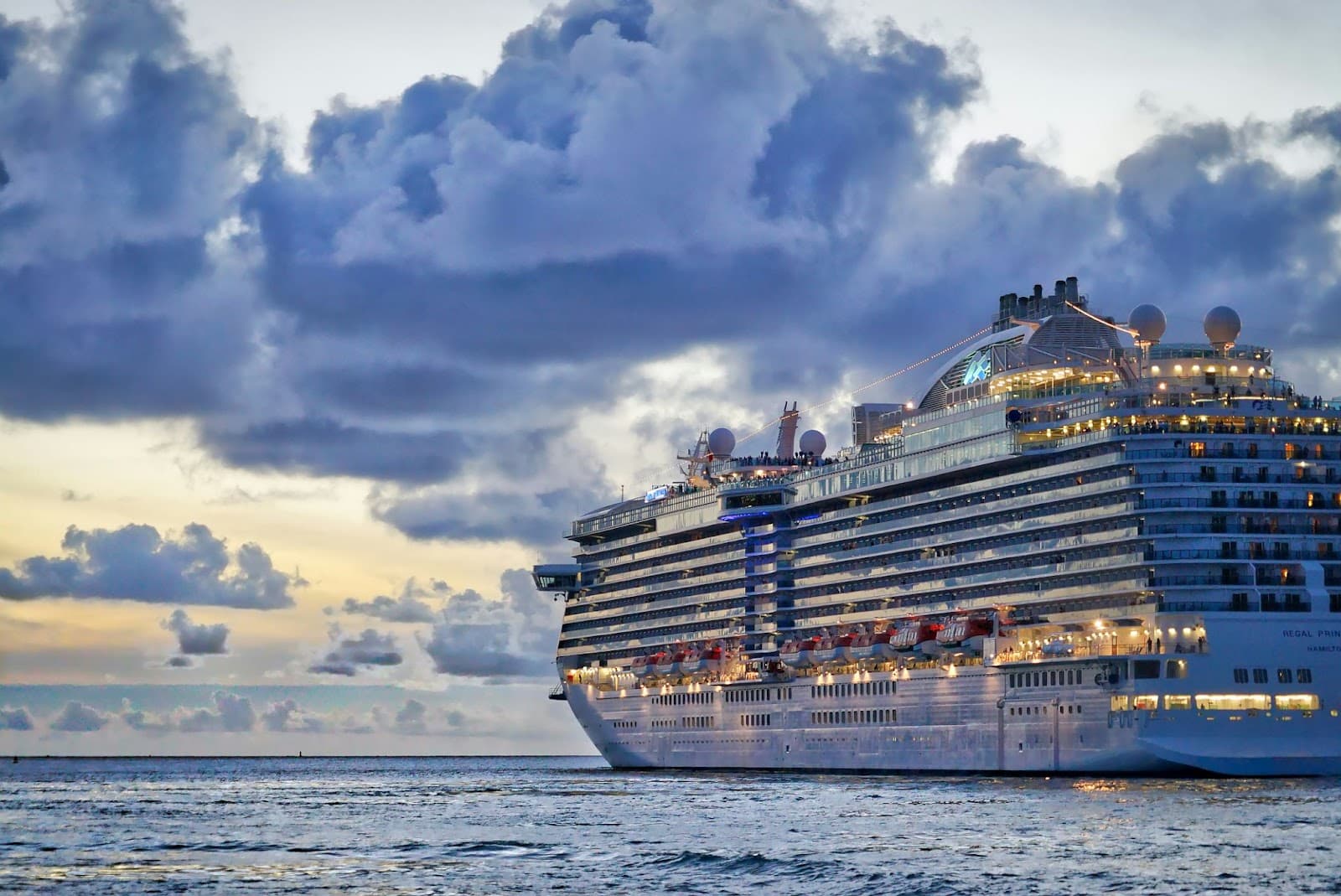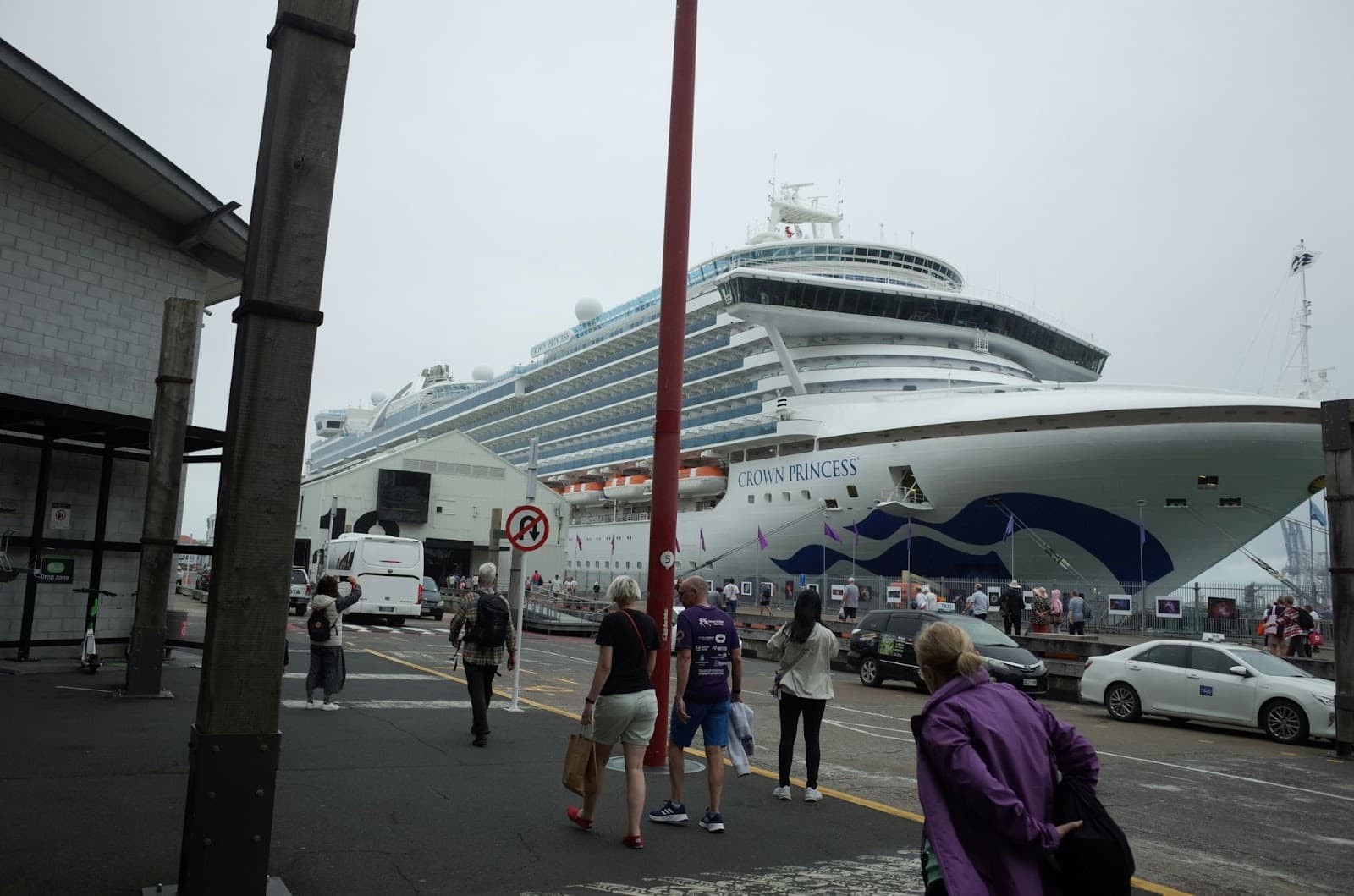The ocean, with its vast and enigmatic nature, possesses a serene beauty, teeming life, and formidable power. It arouses curiosity among many, from surfers and SCUBA divers to those simply enchanted by its shores, about the origins and nature of its waves. The rolling motion of the ocean, with waves ranging from gentle ripples to towering tsunamis, is primarily the result of wind energy transferring across the water’s surface. This phenomenon is not exclusive to the oceans; large lakes, such as North America’s Lake Superior, also experience significant wave activity due to wind and tidal forces. This exploration delves into the essence of waves, their formation, and their influence on marine ecosystems and coastal areas.
What Is A Wave?
To comprehend how waves are formed, one must first grasp what a wave is and its constituent parts. Waves manifest as energy transfers from one medium to another, generating ripples that propagate outward. This energy causes water particles to oscillate, moving upwards with high energy and descending as their energy diminishes. Analogous to shaking a rope up and down, where the rope moves vertically but not forward, ocean waves exhibit a similar behavior. The water itself does not travel horizontally; rather, the energy is passed from one particle to the next, creating the illusion of forward movement. Thus, waves signify energy transfer rather than the physical displacement of water.
Parts Of A Wave: How Waves Are Formed in the Sea?
Understanding a wave’s components enriches one’s insight into their formation and behavior. Waves are characterized by their frequency, crest, trough, equilibrium, amplitude, wavelength, height, period, frequency, and phase. These elements collectively define a wave’s properties, such as its strength, duration, and the distance it can travel. The relationship between a wave’s frequency and its period is inverse; as the frequency increases, the period decreases, which is crucial for understanding wave dynamics.
How Waves Are Formed in The Sea?
The ocean showcases a diversity of wave types, each formed through different mechanisms. The majority of oceanic waves arise from wind energy transferring to the water, creating varied patterns based on wind speed, duration, and the fetch over which the wind blows. Waves can also stem from storm surges associated with hurricanes and cyclones, which amplify sea levels and can lead to destructive coastal flooding. Seismic activity beneath the ocean floor, such as earthquakes and volcanic eruptions, generates seismic waves, leading to tsunamis that can wreak havoc upon reaching land. Additionally, seiche waves, resulting from wind or seismic activity in enclosed waters, and tidal waves, caused by the gravitational pull of the moon and sun, further illustrate the complexity of wave phenomena. Internal waves, occurring beneath the surface, demonstrate the intricate interplay between different water densities and ocean currents.
This exploration into the ocean’s waves reveals their multifaceted nature and the dynamic processes behind their formation. Understanding waves not only satiates the curiosity of those drawn to the ocean’s allure but also enhances our knowledge of marine environments and their integral role in the Earth’s ecosystems.
Factors Affecting the Size and Power of Waves in the Ocean
The dynamics of waves within the ocean are influenced by a myriad of factors that contribute to their size, speed, and power, leading to a diverse array of wave patterns and behaviors that often defy prediction. This complexity is due to a variety of elements, each playing a role in shaping the characteristics of waves.
How Waves Are Formed in the Sea and Influenced on Characteristics?
The genesis, magnitude, and might of waves are primarily dictated by their source and any intervening barriers. Key factors include:
- Wind Speed and Duration: The force and persistence of wind stand as crucial determinants in a wave’s vigor and stature. Stronger winds imbue waves with more energy, and sustained winds allow for greater energy transfer to the waves, culminating in their increased size. This principle is fundamental in both meteorology and oceanography, as it influences weather systems, climate patterns, and marine ecosystems. The Beaufort scale, which categorizes wind speeds, is often used to predict potential wave heights. Furthermore, the alignment of wind direction with wave travel can significantly affect wave propagation and energy distribution, impacting activities such as sailing, surfing, and coastal engineering projects. Understanding the dynamics of wind on wave formation is essential for accurate weather forecasting, maritime navigation, and the development of offshore structures;
- Fetch: Defined as the span of water over which wind blows uninterrupted, fetch length is instrumental in wave formation. A longer fetch facilitates a prolonged energy accumulation from the wind, resulting in larger waves. This concept is critical for predicting wave conditions in open water and designing structures to withstand wave impacts. The influence of fetch on wave development is a key factor in coastal erosion, sediment transport, and the formation of coastal features such as dunes and barrier islands. Additionally, fetch conditions can influence the design and placement of offshore wind farms, where optimal energy generation depends on capturing significant wave and wind action. In environmental science, understanding the effects of fetch helps in assessing the impact of climate change on wave patterns and coastal landscapes;
- Water Depth: The transition of waves into shallower waters marks a decrease in their speed due to friction, while their height increases, leading to wave breaking. In contrast, the vast depths of the ocean allow waves to travel unhindered over great distances. This phenomenon, known as shoaling, is pivotal in shaping coastal environments and marine navigation. It affects the design and construction of coastal infrastructure, including harbors, breakwaters, and sea walls. Understanding the interaction between waves and varying water depths is crucial for predicting surf conditions, managing coastal erosion, and implementing beach nourishment projects. Deep-water waves, unaffected by the ocean floor, can provide insights into distant weather events and oceanic currents, offering valuable data for climate research and oceanography. The study of water depth’s impact on waves merges principles of physics, geology, and environmental science, highlighting the complex interplay between the ocean’s dynamic forces;
- Ocean Floor Topography: The underwater landscape, including features like mountains, canyons, and ridges, plays a pivotal role in modifying wave direction and power, with the potential to amplify, scatter, or redirect waves. This aspect of marine geography is crucial for understanding coastal dynamics and marine navigation. Bathymetric surveys reveal the complexity of the ocean floor, highlighting the influence of underwater features on ocean circulation patterns and the distribution of marine life. These topographic elements can also create localized wave phenomena, such as tsunamis generated by undersea earthquakes or landslides, illustrating the interconnectedness of geophysical processes and wave behavior;
- Currents: The interaction between ocean currents and waves can enhance or diminish wave characteristics. Currents flowing in tandem with the wind can augment wave growth, whereas opposing currents may reduce wave size or alter their form. This relationship is key to predicting wave conditions for shipping, fishing, and recreational activities. Ocean currents, driven by temperature and salinity gradients, wind, and the Coriolis effect, play a significant role in global climate regulation and marine ecosystem health. Understanding the interplay between currents and waves is essential for accurate weather forecasting, climate modeling, and the design of coastal structures;
- Tides: Tidal shifts, which alter water depth, significantly affect wave behavior. High tides bring deeper water, facilitating wave travel and power, whereas low tides have the opposite effect. This cyclical change is driven by the gravitational forces exerted by the moon and the sun. The predictability of tidal movements allows for detailed planning in maritime operations, coastal management, and the development of tidal energy resources. Tides also influence marine habitats, affecting the distribution and behavior of intertidal organisms, highlighting the importance of tides in both physical oceanography and marine biology;
- Storm and Weather Systems: The advent of intense storms and low-pressure systems can give rise to formidable waves, including storm surges. These weather phenomena can drastically alter sea conditions, posing risks to coastal communities and maritime activities. The energy transferred from the atmosphere to the ocean during such events can result in significant erosion, flooding, and damage to infrastructure. Understanding the mechanics of storm-induced waves and surges is vital for disaster preparedness, coastal defense planning, and climate impact assessments. Meteorological satellites and buoys play a crucial role in monitoring these systems, providing critical data for forecasting and mitigation efforts.

The Ecological Impact of Waves
Beyond their sheer physicality, waves play a crucial role in the ocean’s ecosystem.
- Coastal Shaping and Habitat Formation: Waves are instrumental in sculpting coastlines and creating diverse habitats, such as coral reefs and the intertidal zone, through the distribution of nutrients and the formation of sea foam. This dynamic process not only shapes the physical appearance of the coastlines but also influences the types of organisms that can thrive in these areas. The continuous action of waves breaks down rock formations and deposits sediments, creating sandy beaches and coastal dunes that serve as critical nesting grounds for various species. Additionally, the formation of sea foam, a result of organic compounds in the water, provides a unique microhabitat for small marine organisms, further enriching the coastal ecosystem. The constant reshaping and nutrient distribution facilitate a mosaic of coastal habitats, each supporting a unique array of life, contributing to the overall biodiversity of marine ecosystems;
- Nutrient Dispersion and Marine Life Support: By aiding in the dispersal of larvae and ocean flora, waves contribute to the nutrient cycle and the maintenance of marine biodiversity. This natural mechanism ensures the spread of life across vast oceanic distances, allowing for the colonization of new areas and the sustenance of diverse marine populations. The movement of waves mixes surface water with deeper layers, bringing up nutrients that support the growth of phytoplankton, the base of the marine food web. As phytoplankton bloom, they attract a variety of marine life, from small fish to large mammals, all relying on this essential food source. Furthermore, the dispersion of larvae by waves enables species to maintain genetic diversity, as it prevents populations from becoming isolated. This constant movement and mixing are crucial for the health of marine ecosystems, ensuring resilience against environmental changes and supporting the complex food chains that characterize the ocean;
- Transportation and Genetic Diversity: Marine animals depend on waves and tides for movement and relocation, essential for ecological balance and genetic diversity. The rhythmic movement of the sea not only facilitates the migration of organisms across different marine habitats but also plays a pivotal role in the breeding cycles of many species. For example, sea turtles use the direction of the waves to navigate back to their nesting beaches, while some fish species rely on wave patterns to time their spawning events. This reliance on the ocean’s dynamics ensures that genes are mixed over wide areas, reducing the risk of inbreeding and promoting the emergence of resilient populations capable of adapting to changing environmental conditions. Moreover, the transportation of nutrients and organisms by waves contributes to the establishment of new communities in previously uninhabited areas, enhancing the overall diversity and productivity of marine ecosystems;
- Energy Source: The energy produced by waves is vital for sustaining the vast biodiversity found in oceanic environments. Beyond its ecological roles, wave energy represents a renewable resource that can be harnessed to generate electricity, offering a sustainable alternative to fossil fuels. The kinetic energy of waves, driven by the wind and gravitational pull of the moon, is a powerful force that, when captured using technology, can significantly contribute to human energy needs without harming marine ecosystems. The potential of wave energy as a clean power source is immense, highlighting the importance of waves not just for marine life but also as a key component in the transition towards more sustainable energy systems. By investing in wave energy technology, we can reduce our carbon footprint and protect marine habitats, all while tapping into the endless supply of power provided by the world’s oceans.
FAQs
Ocean waves are primarily formed by wind. As wind blows across the surface of the water, it transfers energy to the water, creating waves. The size and strength of these waves depend on the wind speed, the duration of the wind, and the distance over which the wind has blown (fetch).
Yes, waves can change direction after they have formed. This phenomenon, known as refraction, occurs when waves travel from deeper to shallower water or encounter obstacles like the ocean floor topology, coastlines, or artificial structures. The change in speed between different parts of the wave causes it to bend and change direction.
Waves do lose their energy over time, especially as they encounter friction from the ocean floor, air resistance, and obstacles. This energy dissipation is a natural process that eventually leads to the breaking of waves as they approach shorelines or run into land masses.
The largest wave recorded on a lake was 28 feet tall, occurring on Lake Superior near Marquette, Michigan. Lake waves, also known as seiches, can be surprisingly large, given the right wind conditions and fetch.
Tides, which are caused by the gravitational pull of the moon and the sun, significantly affect wave behavior. High tides result in deeper water near shorelines, allowing waves to retain more of their energy and sometimes increase in size. Conversely, during low tide, waves lose energy more quickly and break sooner due to the shallower water.
Storms, especially intense low-pressure systems, are powerful creators of waves in the ocean. The strong winds associated with storms can generate large, energetic waves, known as storm surges, which can be particularly destructive when they reach coastlines.
Waves play a critical role in the ocean ecosystem by shaping coastlines, distributing nutrients, and facilitating the movement of marine organisms. They contribute to the mixing of water, which helps circulate oxygen and nutrients, supporting the life of countless marine species. Waves also assist in the dispersal of larvae and sea plants, promoting biodiversity and the health of marine habitats.



